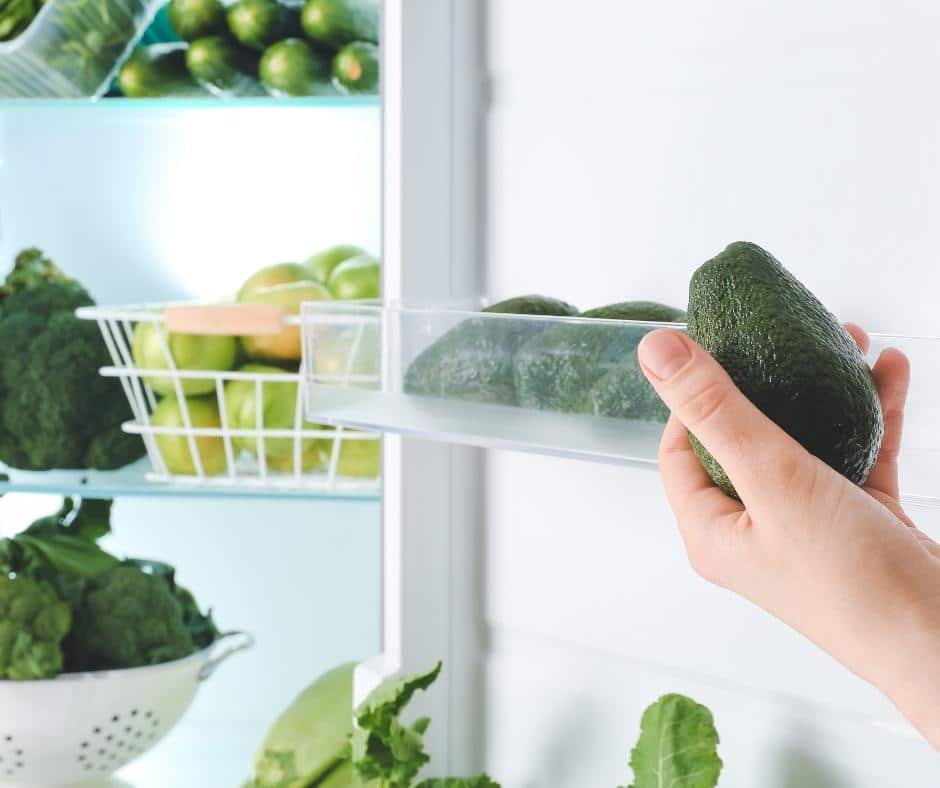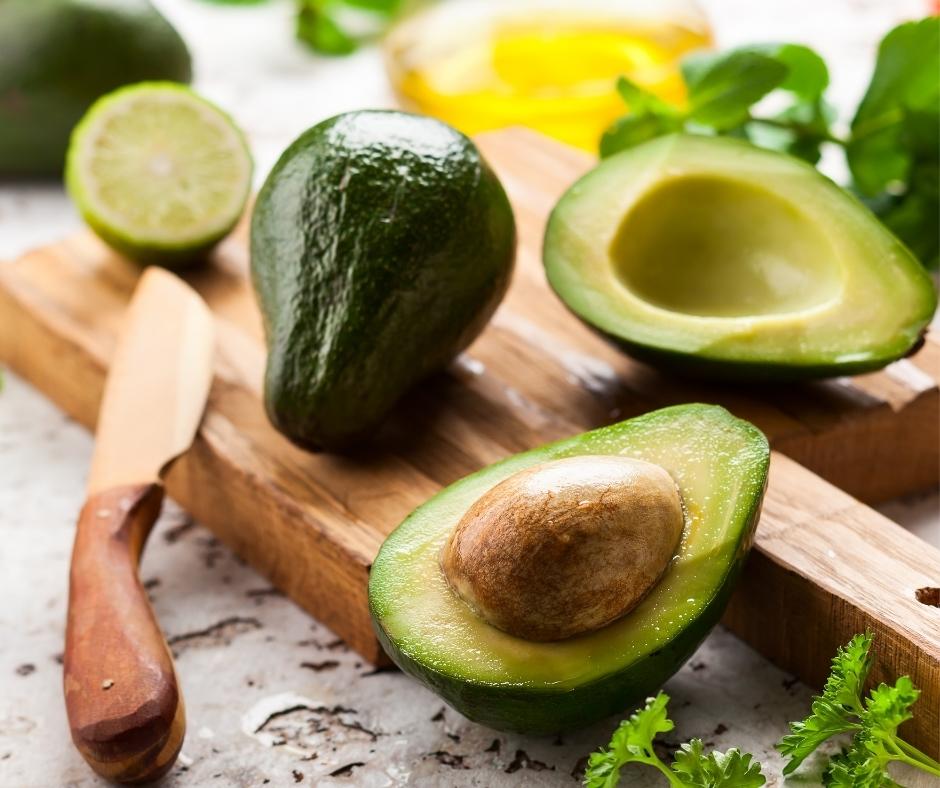
What is the Avocado Shelf Life?
Avocados are a fruit that, scientifically speaking, is known as “Persea Americana.”
Avocados are highly valued for a variety of reasons. They include significant amounts of disease-fighting antioxidants, such as monounsaturated fatty acids and phytochemicals.
Avocados are native to Mexico and thrive in tropical environments. They are associated with the country because they are said to have originated there.
Avocados have grown in popularity owing to their high nutritional value, which has enhanced their attractiveness in the health sector and among health-conscious consumers.
Avocados are one of those items that can go from hard and unripe to mushy and ripe in a matter of minutes. Another fascinating aspect about avocados is that they don’t change color when ripened on the tree. Once plucked from the tree, they mature and acquire a desirable texture.
Avocados come in a variety of shapes, sizes, and skin colors. Hass avocados are the most frequently produced type. Avocado flesh varies depending on its color, size, and texture.
Avocados come in a rainbow of colors, including green and dark brown. You’ll also find avocados that contain greasy or firm flesh. Some types have watery flesh.
When it comes to storing avocados, there are a few storage strategies that will help you keep them from turning brown too soon.
Whether you have unripe avocados or ripe ones that need to be kept longer, these suggestions will come in handy.
It’s critical to understand an avocado’s shelf life in order to store it correctly.
- Avocados that are ripe, cut, and undamaged can last for a week in the refrigerator and up to three days if left exposed.
- Whole avocados, while excellent in a smoothie or as an ingredient in guacamole, last only about one week within the refrigerator and up to seven days in the pantry.
- Avocados that have been kept in good condition can be stored in the freezer for up to four months.
How to Tell If An Avocado is Ripe
The sense of touch is essential for determining whether an avocado is ripe. When pressure is applied to a ripe avocado, it indents slightly inward without being squashed. An overripe avocado will be flattened.
The color of an unripe avocado’s skin is another indication that it’s ready to eat. A raw avocado will have a bright and glossy green appearance for the green-skinned variety.
The skin of the avocado ripens from bright green to dark green and then brownish as it matures.
When overripe, the brown-skinned variety will keep its brown color but take on a deep, dark brown appearance.
For an avocado to keep for longer, consider these two things:
- The state of the avocado before storage is important because it determines how the avocado will be stored. It can range from a raw, entire avocado to a ripe, whole avocado to a ripe cut avocado to mashed avocados and even raw, cut avocados.
- Do you want to keep things in the pantry, fridge, or freezer?

How to Prepare Ripe and Unripe Avocados
If you have avocados that are ripe but haven’t eaten them yet, keeping them in the refrigerator when whole is the best option. Due to the cold temperatures, this will prevent the ripening process from occurring.
Leaving the avocados in the pantry will cause them to rot quickly.
It’s not a good idea to keep unripe avocados in the refrigerator or freezer, because doing so prevents them from maturing and ripening as they should. This also inhibits the natural tastes from developing.
It is best to leave whole, raw avocados in the open or in the pantry to allow them to naturally ripen.
Avocados stored in a brown paper or cloth bag with an apple or a banana will, however, ripen more quickly. These three fruits are known to mature naturally by generating ethylene. As a result, if you want whole avocados to mature faster, it is only prudent to store them with other ethylene-producing foods.
If you accidentally slice open an unripe avocado, sprinkle the flesh of the cut avocados with lemon or lime juice, wrap the halves back together with the pit, wrap them in plastic wrap, and store them in the fridge. Check on them from time to time.
Cut Avocados: How to Manage Ripe and Raw Avocados
You might have found that half an avocado is all you need to spread on your toast or make a modest amount of guacamole for your lunchtime nachos. The other half then presents you with the conundrum of what to do with it.
To keep a ripe avocado from ripening further and to extend its shelf life, store it in the refrigerator.
To prevent the flesh from turning black, apply an acid to it, such as lemon juice, lime juice or vinegar, and wrap the avocado in a cling film or paper. Vegetable oil may also be used to keep the fruit from darkening.
Ensure that you keep the seed because it helps to protect the exposed flesh.
If you want to consume the avocado in a few days, putting it in the fridge’s produce section is useful.
In the case you want the avocado to keep for longer, chop it into tiny pieces or mash it and combine it with lemon/lime juice or oil before freezing. It’s the ideal technique to preserve avocados for long-term storage.
The key is to prevent any air from entering the avocado so that it does not brown. This may be done by removing all of the air from the zip lock bag and making sure that the bag comes in direct contact with the avocado, and if utilizing an ice tray, covering it with a plastic wrap and pressing down on it to ensure that all surface of the avocado is covered.
You may keep avocados in portions if you have a lot of them. You can only thaw what you need, instead of everything at once.
Vacuum sealing cut avocados is another excellent option when freezing them.

When Should You Throw Away Avocados?
Avocados do indeed go bad, and it’s important to know how long you can keep them. And what is the best way to tell if your avocados are rotten? No matter how natural a product may be, it will eventually spoil. Something could go wrong with storage and cause the avocados to decay, even if you used the techniques above.
An avocado that is rotten, unlike an overripe one, is repulsive to eat or utilize. Before throwing out that superfood, consider the following methods for determining if an avocado is spoiled:
Taste and smell
When sniffed, a rotten avocado has a sour fragrance and emits an odorous stench. When you cut open the avocado, this is most evident.
Oxygen is the most common cause of avocado deterioration. When storing sliced avocados, make sure there’s no room for air to get in.
Blackened and fibrous flesh
The darker the skin and flesh of an avocado become with additional ripening. If no mold or scent is present, it is acceptable to eat brownish flesh.
However, when the avocado rots, the flesh separates, becomes darker and more bitter in color, and eventually black and stringy.
To avoid infections or food poisoning, you should throw away any unripe avocados.
Mold that is visible
Mold is a telltale indication that avocado is spoiling. The presence of mold may be detected by looking for white or greyish patches on the skin, stem eye, or flesh. The stem eye or nub will also develop a black coating.
Simply put, the majority of avocados are grown in California. They have a green color and an abundance of nutrients, which makes them one of nature’s superfoods. Avocados fresh off the tree contain low levels of ethylene glycol, but if they’re kept for extended periods of time before consumption, this can develop into high concentrations that might be poisonous to humans.
Texture that is mushy
An overripe avocado has a squishy texture. This indicates that the fruit will spoil within a short period. As a result, it’s preferable to consume it right away or toss it out entirely.
Expiration is indicated by an already sunken but intact avocado with dented skin.
How to Store Avocados
– Store avocado in a cool, dry place.
– If you want to store avocado for a few days, put it in the fridge.
– Avocados do not ripen after they are picked so you should buy them when they are green and allow them to ripen at home.
– Once they are ripe, they will last 3-5 days in the fridge but if you want to keep them for longer, chop them into tiny pieces or mash it and combine it with lemon/lime juice or oil before freezing. It’s the ideal technique to preserve avocados for long-term storage. The key is to prevent any air from entering the avocado and freezing it in a vacuum-sealed bag or container.
– If you have an avocado that is overripe, use it for making dressings, desserts, or smoothies.
Finally, in the refrigerator, how long do avocados last?
Avocados are nutrient-dense and low-calorie fruit. They typically last for 3 to 5 days in the fridge. Any mishandling may accelerate the deterioration of their flesh. As a result, you should handle them with care by avoiding excessive squeezing and utilizing the techniques outlined above to extend their shelf life as much as possible.
